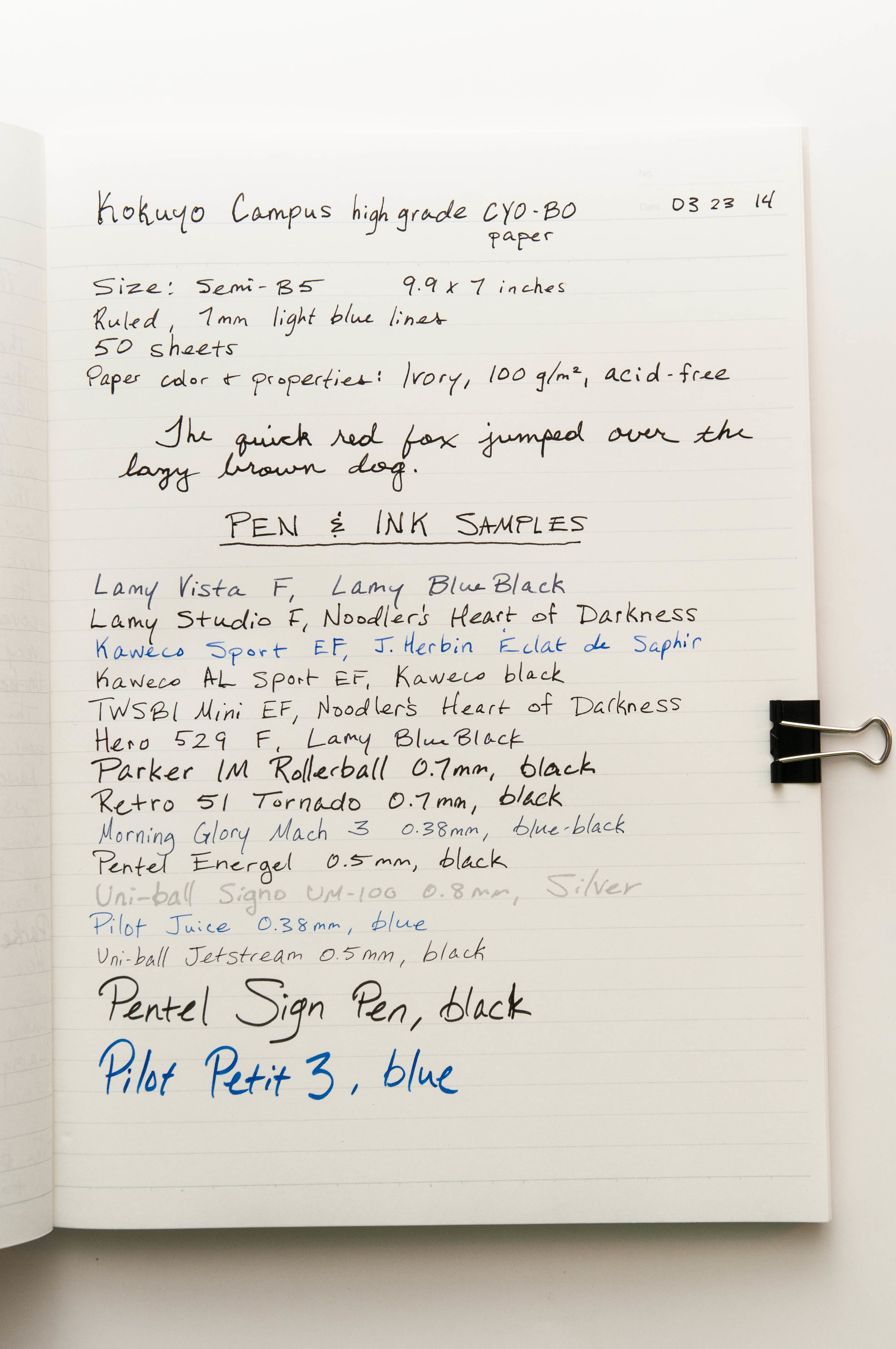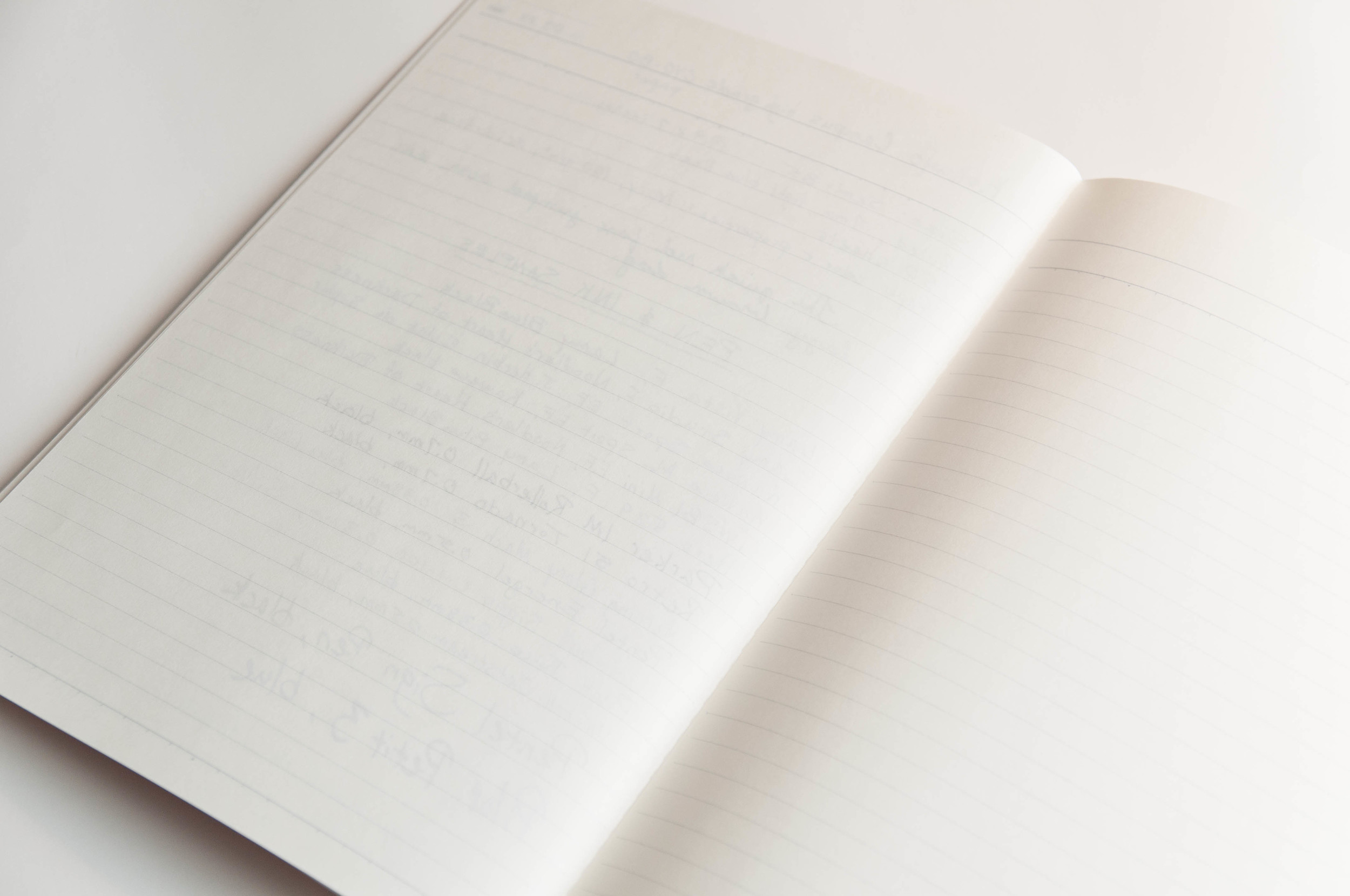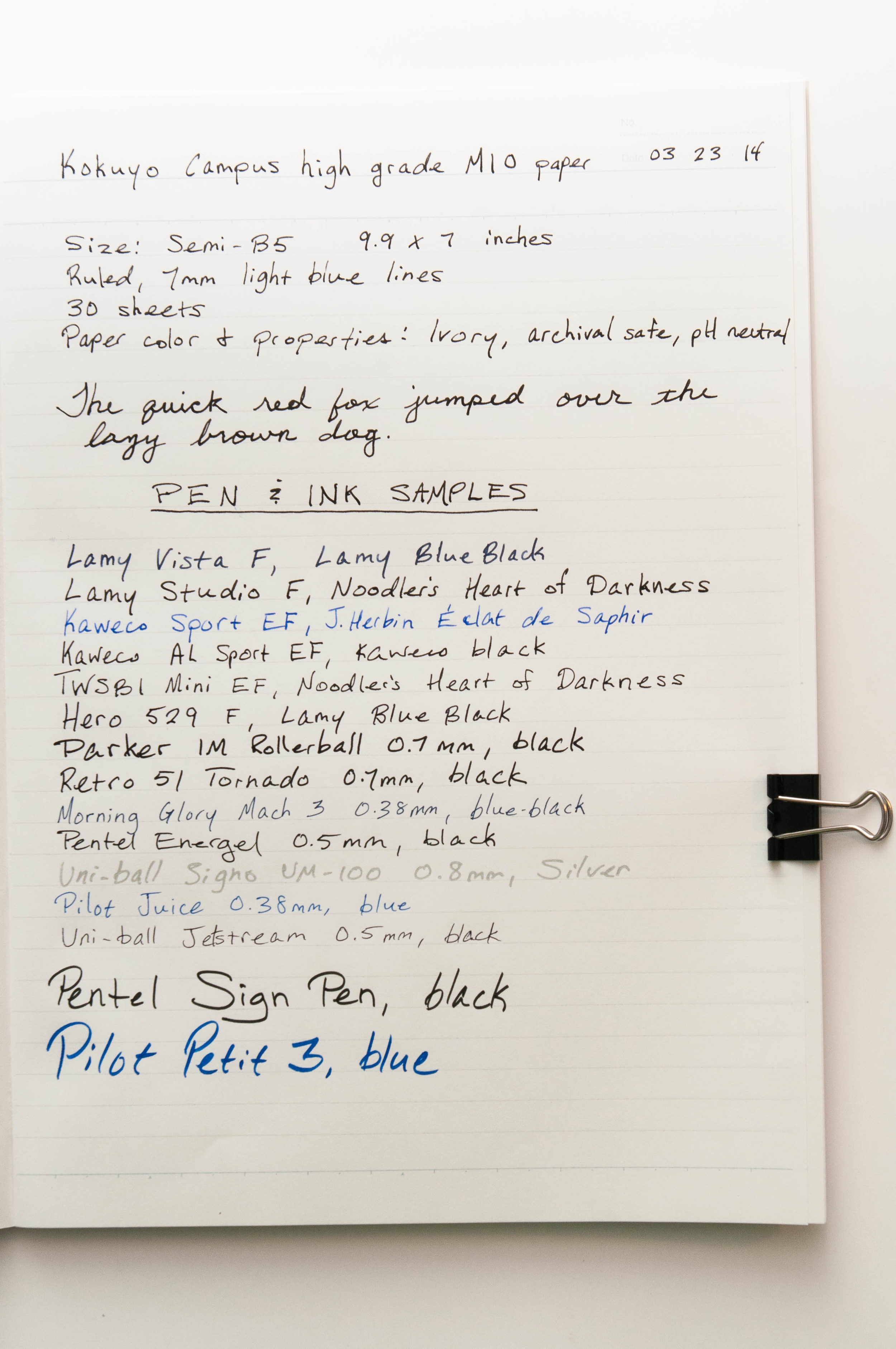I have yet to find the perfect paper. There are sacrifices to be made, even with brands and styles many consider to be the best on the market. It all comes down to what sacrifices you are willing to make when choosing paper. Ogami Stone Paper is asking me to make too many.
Stone paper has become all the rage across the blogosphere, even spawning a Kickstarter project. It's a great idea in principle: A paper made from a natural byproduct of water and limestone that is tear-resistant, waterproof, and fully recyclable. It is the ultimate paper, right?
Wrong.
To have any stone paper product become a regular part or your writing arsenal you will need to limit the types of writing instruments you use. Ballpoints work well, and pencils are fine. Anything else is going to take some thought and consideration. Plastic and fiber tip pens are ok, but something like the Montblanc Fineliner is terrible. Gel ink pens are passable, but any fine tip that breaks the top layer of the page will bleed, and the paper is so pliable that your letter shapes are transferred to the page behind the one you are writing on. It's like the spy letter game you played as a kid. Run the pencil lead over the blank page lightly and you will see every letter you wrote on the previous page.
Fountain pens are a non-starter. The ink bleeds profusely and takes a long time to dry. I could barely finish my sample sentences in some cases. And the feel of the paper is just weird. It's marketed as "rich, creamy, and luxurious" but read further: "super fine nibs / points may "grab" the paper a little." It's more like writing on a cushion, which is not as neat as it sounds.
Another devil in the details is a big issue in my mind. Stone paper is far from archival. In fact, "Repap is photo-biodegradable. It will break down after 14-18 months exposure to UV light." I don't store my paper directly in sunlight or necessarily concern myself with archival paper qualities, but some people do. Keep these things in mind where considering stone paper.
The Ogami brand makes some of the best looking notebooks on the market, stone paper or not. The covers are beautiful, the size and layout are nice, and the attention to detail is top notch. The usability is not there for me though, and that's what it is all about. There are too many sacrifices I need to make to use stone paper on a regular basis.
(JetPens is an advertiser on The Pen Addict and I received this product at no charge.)


















